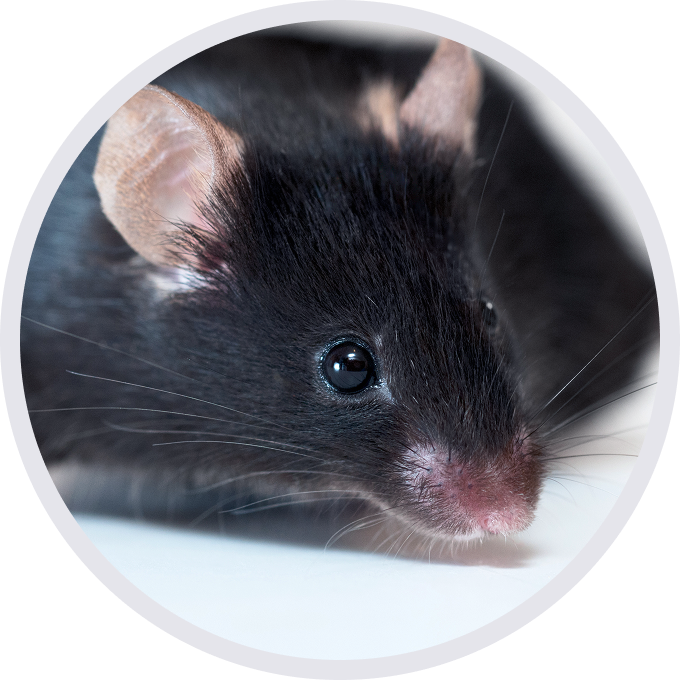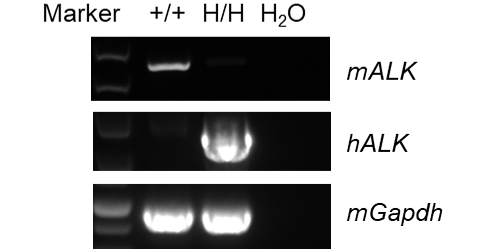Description
- ALK encodes a receptor tyrosine kinase, which belongs to the insulin receptor superfamily. This protein comprises an extracellular domain, a hydrophobic stretch corresponding to a single pass transmembrane region, and an intracellular kinase domain. It plays an important role in the development of the brain and exerts its effects on specific neurons in the nervous system. This gene has been found to be rearranged, mutated, or amplified in a series of tumors, including anaplastic large cell lymphomas, neuroblastoma, and non-small cell lung cancer.
- A chimeric CDS that encoded human ALK extracellular domain, mouse Alk transmembrane and cytoplasmic domain was inserted right after mouse Alk ATG to replace the exon 1 of mouse Alk gene. The chimeric ALK protein expression will be driven by endogenous mouse Alk promoter, while mouse Alk gene transcription and translation will be disrupted.
- Mouse Alk mRNA was detectable in wild-type mice. Human ALK mRNA was detectable only in homozygous B-hALK mice but not in wild-type mice.
- B-hALK mice can be used to study the in vivo efficacy and safety evaluation of oncology drugs.
Targeting Strategy
Gene targeting strategy for B-hALK mice. A chimeric CDS that encoded human ALK extracellular domain, mouse Alk transmembrane and cytoplasmic domain was inserted right after mouse Alk ATG to replace the exon 1 of mouse Alk gene. The chimeric ALK protein expression will be driven by endogenous mouse Alk promoter, while mouse Alk gene transcription and translation will be disrupted.
mRNA expression analysis
Strain specific analysis of ALK mRNA expression in wild-type C57BL/6 mice and B-hALK mice by RT-PCR. Brain RNA were isolated from wild-type C57BL/6 mice (+/+) and homozygous B-hALK mice (H/H), then cDNA libraries were synthesized by reverse transcription, followed by PCR with mouse or human ALK primers. Mouse Alk mRNA was detectable in wild-type mice. Human ALK mRNA was detectable only in homozygous B-hALK mice but not in wild-type mice.
* When publishing results obtained using this animal model, please acknowledge the source as follows: The animal model [B-hALK mice] (Cat# 111432) was purchased from Biocytogen.

